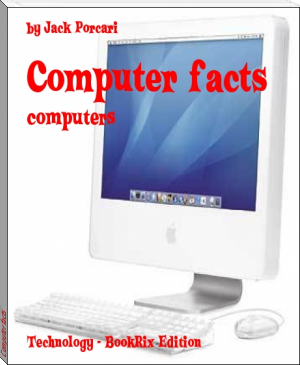The History of Apple Inc. by by : Malak Mansour (best novels to read for beginners TXT) 📖

- Author: by : Malak Mansour
Book online «The History of Apple Inc. by by : Malak Mansour (best novels to read for beginners TXT) 📖». Author by : Malak Mansour
Sculley began to lose interest in the day to day operations of Apple. Eventually the Apple Board of Directors decided they'd had enough. In June of 1993, They relieved Sculley of his position as CEO, putting Spindler in the big chair. Sculley remained with the company as chairman for several months and then resigned.
CH.6
1993-1996
Spindler, by all accounts, was the wrong man for the job. A fairly impersonal man, Spindler's office was nearly impossible to get into. However, in his two and a half years as CEO, Spindler oversaw several accomplishments.
In 1994 Apple announced the PowerMac family, the first Macs to be based on the PowerPC chip, an extremely fast processor co-developed with IBM and Motorola. The PowerPC processor allowed Macs to compete with, and in many cases surpass, the speed of Intel's newer processors.
Spindler also decided to license the Mac OS to several companies, including Power Computing, one of the more successful Mac-clone makers. But many believe the Apple was too restrictive in its licensing agreements, and only a handful of companies ever licensed the Mac OS.
Apple's worst problem wasn't selling computers--it was building them. By June 1995 Apple had $1 billion dollars in backorders--and did not have the parts to build them. Apple's problems were added to by the late-summer release of Windows '95, which mimicked the Mac GUI better than ever.
Apple took its worst plunge ever in the winter of 1995-96. Misjudging the market, Apple pushed low-costPerformas over mid-range PowerMacs, and failed to make a profit at all. Apple posted a $68 million loss for that quarter. In January 1996, Spindler was asked to resign as CEO and was replaced by Gil Amelio, the former president of National Semiconductor.
CH.71996-1997
Amelio made a strong effort to bring Apple back to profitability, but his efforts would prove to be largely unsuccessful. Following his first 100 days as CEO, Amelio announced broad changes in the corporate structure of the company. The company was to be split into 7 separate divisions, each responsible for its own profit or loss. He has also made an effort to keep developers and customers better informed about the day-to-day affairs of the company. Although the company announced a staggering $740 million loss for Q1 1996, they brought that loss down to $33 million for Q2, beating all estimates by the best financial experts. In Q3 Apple profited nearly $30 million, again astounding financial experts, who had predicted a loss of as much. (Apple lost considerably more in Q4.)
In late december 1996, Apple made an industry-shattering announcement that it would be acquiring NeXT, and that Steven Jobs would be returning to the fold. The merger was brought about in order to acquire NeXTstep, which was to become the basis for Apple's next-generation OS, Rhapsody, which was slated for a 1998 release
The Newton department was spun off into a wholly-owned subsidiary, Newton, Inc.
In early July 1997, Apple announced the resignation of Gil Amelio, following another multi-million dollar quarterly loss. This came as a surprise to nearly everyone, and at this time a new CEO has yet to be announced. The Executive Board reportedly felt that Amelio had done all he could for Apple, and that while he had been responsible for a number of improvements at Apple, he could do no more. In the meantime Fred Anderson, Apple's CFO, has been put in charge of day-to-day operation, and Steve Jobs was given an "expanded role" at Apple for the interim.
CH.81997-2000
Jobs' presence was known almost as quickly as NeXT was acquired. The degree of Jobs' "expanded role" soon became quite clear. With no CEO and Apple Stock lower than it had been in 5 years, there were many decisions to be made, and not much time to make them. Jobs began to make striking changes in the structure of Apple, including the canceling of the Newton spin-off. (The Newton was discontinued several months later.) The time and place for the most ground breaking announcements, however, would be MacWorld Boston in August 1997.
Jobs, who by now was being referred to as "interim CEO," made the keynote speech, and spoke of the company's upcoming aggressive advertising campaign, upcoming new Macs, and Rhapsody. He also announced an almost entirely new Board of Directors, including Larry Ellison, CEO of Oracle. But he saved the best for last. In a ground breaking decision, Jobs announced an alliance with Microsoft. In exchange for $150 million in Apple Stock, Microsoft and Apple would have a 5-year patent cross-license and, more importantly, a final settlement in the ongoing GUI argument. Microsoft agreed to pay an unreleased sum of additional funds to quiet the allegations that it had stolen Apple's intellectual property in designing its Windows OS. Microsoft also announced that Office '98, its popular office package, would be available for the Mac by years end.
These announcements gave Apple new life, but Jobs was not finished. There was one more big obstacle to tackle: Clones. Jobs felt that Clone Vendors such as Power Computing were cutting into Apple's high-end market, where they traditionally made the most profit. Clones had failed to effectively expand the MacOS market, instead taking customers away from Apple. Jobs remedied this apparent failure of the Clone experiment by all but pulling its plug. In early Fall 1997, Apple announced its intention to buy out Power Computing's MacOS license, and much of its engineering staff. Power went out of business several months later, with Apple taking over its product support. Apple also bought out its MacOS licences from Motorola and IBM. Umax was allowed to stay in the game, but with the tacit understanding that it would fill the low-end market, with machines selling for under $1000. Umax sold its remaining inventory of Macs, and is now selling "Wintel" boxes.
On November 10, 1997, Apple held another press conference, in which Jobs announced further changes to Apple's corporate strategy. Apple would now sell computers direct, both over the web and the phone, as Power Computing had done so well in the past. Jobs also announced two new Apple machines: the PowerMac G3, and the PowerBook G3.
The Apple Store was a runaway success, and within a week was the third-largest eCommerce site on the web. At MacWorld San Francisco in January, Jobs announced that Apple had, for the first time in more than a year, had a profitable First Quarter--to the tune of $44 Million. This far eclipsed analysts' projections, and sent Apple's stock back into the 20s. In April 1998, Jobs announced another profitable quarter ($57 Million), which came as a big surprise to nearly everyone. Jobs kept momentum moving, and in early May announced a newPowerBook G3, an Educational Apple Store, and an entirely new Mac design--the iMac. The iMac would be Apple's answer to the low-end consumer question, with more than enough computing power for most people, at an affordable price. Later that month, in his keynote at the WWDC, Jobs announced a dramatic shift in Apple's OS direction. Mac OS X would merge OS 8 and Rhapsody--Apple's upcoming version of NeXTStep--into one robust OS, with all the features of a modern OS and backward compatibility with most OS 8 applications
In July 1998, Jobs announced that Apple had profited for the 3rd consecutive quarter--to the tune of $101 million. This helped to push Apple's stock to several 52-week highs in just a few days. The iMac was the best-selling computer in the nation for most of the fall, and it drove Apple sales well beyond most predictions. In the fall, Jobs announced another profitable quarter, making a full year of profitability. In January 1999, Jobs announced a 5th consecutive profitable quarter, with year-over-year growth, and a sleek new PowerMac G3.
In July 1999, Steve Jobs filled the final quadrant in the "Apple Product Matrix"--The consumer portable--when he introduced the iBook. Based on the same principles that had made iMac such a hot sell a year earlier, the iBook brought style to the low-end portable market. Several months later, Jobs announced the PowerMac G4, a significant new professional desktop machine. Apple's stock had risen all summer, and by mid-September was trading at an all-time high, in the high 70s.
n a dramatic Keynote at MacWorld Expo SF in January 2000, Jobs unveiled Apple's new Internet strategy: a suite of mac-only internet-based applications called "iTools" and an exclusive partnership with Earthlink as Apple's recommended ISP. Jobs also announced that he would be dropping the "interim" from his title, becoming the permanent CEO of Apple. Apple's sales continued to rise, as did the stock price, which had climbed to 130 by early March.
In July 2000, Apple announced a slew of new machines, including the PowerMac G4 Cube, which added a fifth category to Apple's four-corner product strategy. The Cube was Apple's answer to those who wanted an iMac without a monitor, as well as challenge to the computing industry to continue to minimize the size of computers while increasing their visual appeal. The Cube was the biggest gamble Jobs had made since the release of the iMac. It would turn out to be a resounding failure.





Comments (0)